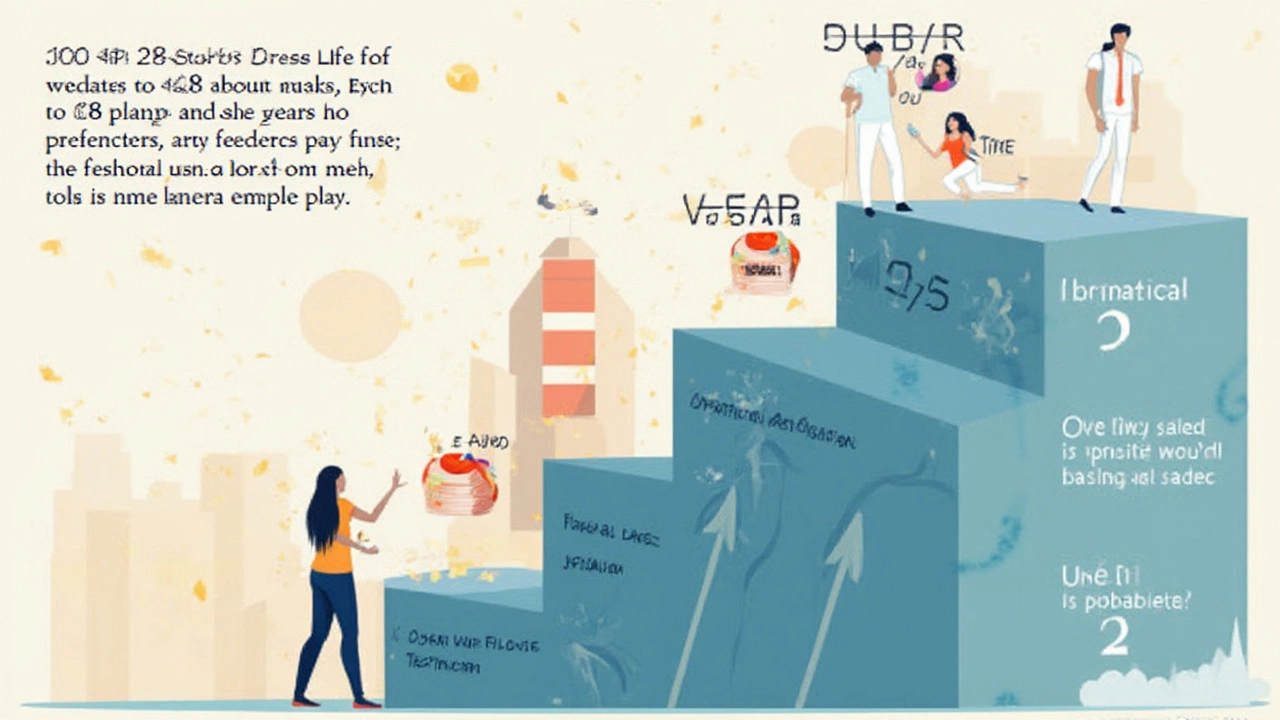Ever wondered what the absolute lowest salary is for a federal government worker? Trust me, you’re not alone. If you’re aiming to land a government job, knowing where the pay starts can make all the difference when planning your next move.
The government doesn’t actually just pick a random number for paychecks. There’s a system—the famous General Schedule (GS) pay scale. That’s what sets the rates for most federal jobs, from those fresh out of school to seasoned pros. Every job gets a grade and a step, which decides your salary. GS-1 Step 1 is the lowest point. And, honestly, the paycheck for GS-1 is, well, just a little above minimum wage. We’re talking something around $22,000 a year as of 2025—give or take, depending on where you live because of locality adjustments.
- The Basics: How Federal Salaries Are Set
- What Is the Lowest Federal Salary Right Now?
- Who Gets the Lowest Federal Pay?
- Ways to Move Up from Entry-Level Pay
- Is Starting Low Worth It? Real-World Tips
The Basics: How Federal Salaries Are Set
The way federal pay works isn’t a mystery, but it does have some layers. The main thing you need to know is the General Schedule—aka the GS pay scale. It covers most civilian government jobs, from your first day as a file clerk to a senior analyst with decades of service. Each job is assigned a GS pay scale grade (from GS-1 up to GS-15). Each grade comes with ten steps, and every step means a bit of a raise.
Not all government jobs use the GS scale, but most entry-level and administrative roles do. The higher the grade, the higher the pay. Every year, the Office of Personnel Management (OPM) publishes a new pay table with updated numbers. Extra cash comes in the form of 'locality pay,' which bumps up your wage if you work in a pricier area like San Francisco or New York.
- Grade: Ranges from GS-1 (lowest) to GS-15 (highest).
- Step: Within each grade, you can advance through 10 steps as you gain experience or hit certain performance milestones.
- Locality Pay: Adjusts your salary based on where you work in the U.S.
If you’re curious about actual numbers, check out this sample table showing 2025 base annual salaries for the lowest grades (excluding locality pay):
| GS Grade | Step 1 | Step 5 | Step 10 |
|---|---|---|---|
| GS-1 | $22,230 | $23,520 | $25,150 |
| GS-2 | $24,900 | $26,140 | $27,780 |
The pay jumps as you climb grades and steps, but starting at the bottom means you’ll likely be in the GS-1 or GS-2 range. That’s the structure, plain and simple. Anyone can move up, but everyone starts somewhere—and this is it.
What Is the Lowest Federal Salary Right Now?
If you want the exact number for the lowest federal salary in the United States, let's cut straight to it: As of 2025, the bottom spot is GS-1, Step 1 under the General Schedule. That’s the base pay scale for federal employees, and the annual rate is $22,480. Yikes, right? That’s just a notch above full-time federal minimum wage, but a lot of folks are surprised how low federal entry-level pay starts.
This number isn’t set in stone everywhere. The base pay can go up depending on where you work, thanks to “locality pay.” For example, someone working as a GS-1 in San Francisco or Washington, D.C. can get thousands more each year than someone working the same job in a rural area. That’s the government’s way of dealing with higher living costs. Here’s how the breakdown looks:
- Base pay for GS-1, Step 1: $22,480 per year
- With locality adjustments: Can range up to around $26,000 in more expensive cities
You can check the exact pay for your city or region by looking up the official federal locality pay tables—these are updated every January and are free to download from the Office of Personnel Management’s website. If you’re weighing the numbers for entry-level government jobs, don’t just look at the national figure. Locality pay can actually make a noticeable difference in your paycheck from day one.

Who Gets the Lowest Federal Pay?
If you’re starting out in the federal government, the odds are your first paycheck could land at the very bottom of the General Schedule. The people who usually get the lowest federal salary work in jobs assigned to GS-1 or GS-2. These are the most basic positions, where experience or education requirements are minimal.
You’ll see GS-1 and GS-2 for jobs like mailroom clerks, laborers, or some types of custodial work. These aren’t common anymore, though. Most federal agencies like to fill vacancies at GS-3 or even GS-4 unless they’re hiring students, seasonal workers, or people with very little work history. If you hold only a high school diploma or a GED, some entry-level clerical or support jobs might still start you at GS-1, depending on the agency and location.
It’s also worth knowing that some special programs let students or interns come in at the lowest levels. The Pathways Program, for example, sometimes brings people in at GS-1 or GS-2, but it’s designed to boost you up after you get your foot in the door.
One more twist: most federal workers are not in GS-1. In fact, according to the Office of Personnel Management in 2024, less than 1% of federal employees are paid at this grade. Most full-timers quickly move to higher grades, or they start higher if they have any college credit or relevant work experience.
- If you see a job listing for GS-1 pay grade, double-check the duties—it’s usually very entry-level and temporary.
- The lowest federal salary usually goes to people with minimal educational background or those in short-term roles.
- Veterans, military spouses, or anyone coming in with special hiring authority might zip past GS-1 entirely.
So, landing at GS-1 isn’t the norm, and if you’re worried about getting stuck there, relax. Most folks who start at the bottom don’t stay there for long, especially if they learn the ropes and show some hustle.
Ways to Move Up from Entry-Level Pay
Starting at the bottom of the government pay scale doesn’t mean you’re stuck there. In fact, the federal system is built for people who want to level up. If you’re looking to escape GS-1 or GS-2 territory, you’ve got some solid options—especially once you know the rules.
First, let’s talk about promotions. The federal government runs on a pretty structured ladder: apply, wait your time, get promoted. As a general rule, government job pay at entry level jumps every one to two years just by hitting the next “step.” But here’s the best part: if you show hustle, you can move grades a lot quicker.
| Year | Typical Entry Grade | Median Salary (Approx.) |
|---|---|---|
| Year 1 | GS-1 Step 1 | $22,000 |
| Year 2 | GS-2 Step 2 | $24,600 |
| Year 3 | GS-3 Step 3 | $27,700 |
Obviously, these numbers depend on your job type and where you live, but the pattern is clear: the more years put in, the bigger the paycheck.
Want to move up faster? Here’s what actually works:
- Education counts. If you earn a higher degree while working (like an associate’s or bachelor’s), you can leapfrog to higher grades. Some agencies let you start at GS-5 or even GS-7 if you’ve got the right diploma.
- Crush your performance reviews. Federal supervisors take these seriously. If you consistently go above and beyond, you can get promoted out of cycle with a “career ladder” position.
- Apply for openings. When you see higher grade jobs listed (even in your own office), apply! Internal candidates with good records almost always get first preference.
- Tackle details or special projects. Going for temp assignments or inter-agency gigs builds your record and network at turbo speed. These count big when raises get decided.
One federal HR expert put it like this:
"If you’re willing to learn new skills and volunteer for the tough projects, you’ll usually leapfrog others who just do the basics." — Michael Watson, US Office of Personnel Management
Here’s another thing: government workers get automatic annual pay bumps most years, even if inflation is rough. In 2024, for example, the average federal raise was over 5%—a solid jump by any standard.
The bottom line? Don’t zone out at entry level. If you stay alert, keep improving your resume, and go for those openings, you’ll move up quicker than most folks think.

Is Starting Low Worth It? Real-World Tips
Here’s the real talk: Starting at the lowest federal salary can be a tough pill to swallow, especially when friends in the private sector seem to have it better at first. But, believe it or not, there are some solid upsides if you play your cards right.
One big advantage is job security. Federal jobs hardly ever face layoffs, and your pay actually grows on schedule if you stick around and do your part. Promotions and step increases happen in a pretty predictable way, which is rare in most private companies. Plus, that "entry-level forever" feeling doesn’t last if you learn the ropes and show some hustle.
Check it out—here’s what real federal workers have seen, based on official data and reports:
| Year | GS-1 Step 1 Salary | Average Promotion Time | Annual Raise (Avg.) |
|---|---|---|---|
| 2022 | $20,999 | 1-2 years | 2.7% |
| 2023 | $21,986 | 1-2 years | 4.6% |
| 2024 | $22,984 | 1-2 years | 5.2% |
If you’re worried about being stuck at the bottom, here’s what you can actually do:
- Apply for internal promotion programs as soon as you qualify—most agencies love to promote from within.
- Find a mentor. Someone who’s been at your agency for a while knows where the shortcuts are.
- Take advantage of on-the-job training and certifications. Anything that adds to your resume gets noticed fast during evaluations.
- Don’t be afraid to switch departments. Moving around can lead to big pay bumps without leaving the government.
The benefits package is another secret weapon. Even GS-1 jobs come with health insurance, paid leave, and a real retirement plan—way better than a lot of starter jobs out there.
So, is starting at the bottom worth it? It’s not glamorous, but it’s a pretty solid launchpad if you want a stable, upward-moving career. A lot of people who started at GS-1 or GS-2 end up making double or triple that salary in just a few years—if they keep grinding and moving up.

